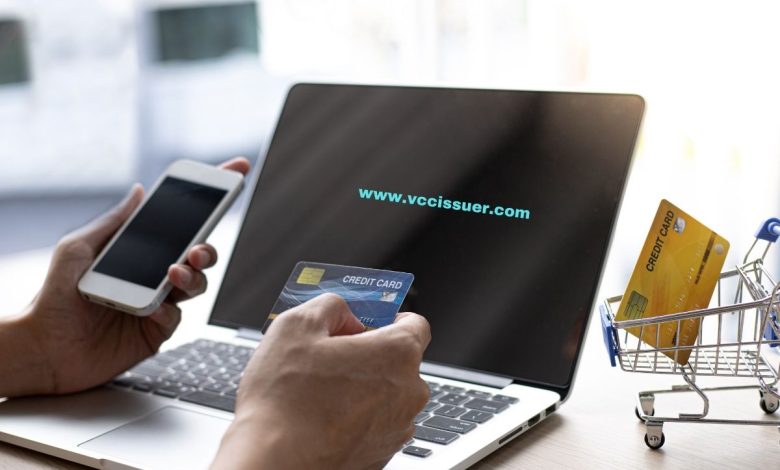How to Use Virtual Debit Card Online

The convenience of online shopping and transactions is undeniable. But with the convenience comes a need for security, and this is where virtual debit cards step in. If you’re wondering, “How to use a virtual debit card online?” you’re in the right place. This comprehensive guide will walk you through the world of virtual debit cards, explaining what they are, why you should use them, and how to make the most of these handy tools for secure online transactions.
Understanding Virtual Debit Cards
What’s the Difference?
So, what exactly is a virtual debit card, and how does it differ from your physical card? A virtual debit card is not a tangible piece of plastic but rather a digital representation of your physical debit card. It’s like having an invisible shield to protect your card information when you shop online. When you use a virtual debit card, your actual card details remain hidden, adding a layer of security to your transactions.
The Magic of Virtual Card Numbers
Virtual debit cards operate by generating a unique card number for each transaction. This number is linked to your primary debit card but is only valid for a single use or a short period. It’s like having a new secret code for every online purchase. This means that even if a cyber-criminal somehow gets hold of your virtual card details, they won’t be of much use for any other transaction.
With the rise of online shopping, virtual debit cards are becoming increasingly popular. They offer a safe and secure way to make online purchases, protecting your financial information from potential threats. But there’s more to discover about using virtual debit cards effectively, so let’s delve into the topic further.
Why Use a Virtual Debit Card
Enhanced Security
Security is paramount when it comes to online transactions. With a virtual debit card, your primary card information remains confidential. You’re essentially creating a barrier between your sensitive data and potential online threats. It’s like wearing a protective shield while surfing the web.
Moreover, virtual debit cards use advanced encryption techniques, making it extremely challenging for cybercriminals to intercept or misuse your card information. This adds an extra layer of security to your online shopping adventures.
Privacy Matters
Using a virtual debit card also offers a level of anonymity. Your online shopping habits are your business, and virtual cards help you keep them that way. Your real name and card details stay hidden, providing peace of mind for your online purchases.
Imagine you’re shopping for a gift for a loved one, and you don’t want to spoil the surprise. A virtual debit card allows you to make that purchase without leaving a digital trail that could reveal your intentions.
Getting a Virtual Debit Card
From Your Bank
To get started with a virtual debit card, check with your bank. Many banks offer this service as an additional layer of security for their customers. You can often request one through your online banking portal or by contacting your bank’s customer service.
When dealing with your bank, it’s advantageous to use their virtual debit card service. They have direct access to your primary account, making it seamless to manage and monitor your virtual card transactions.
Third-Party Providers
In case your bank doesn’t offer virtual debit cards, don’t worry. Several third-party providers specialize in creating virtual cards. These providers often have user-friendly apps or websites to guide you through the process. Just make sure to choose a reputable provider with a secure platform.
As you explore third-party providers, pay attention to user reviews and the provider’s reputation for data security. Opt for a provider that aligns with your online shopping needs and priorities.
Activating Your Virtual Debit Card
Activating your virtual debit card is straightforward, but it’s crucial to follow the steps carefully. Here’s a general guide:
- Check Your Email: Once you receive your virtual card, your provider will send you an email with the card details, including the card number, expiration date, and CVV.
- Link It to Your Account: Log in to your bank’s online portal or the virtual card provider’s platform and link the virtual card to your primary account. This step may involve entering the card details received in your email.
- Create a PIN: Some virtual cards may require you to set up a PIN for added security. Follow the instructions provided by your bank or virtual card provider.
- Activate It: Once you’ve completed these steps, your virtual debit card is ready to use. Some banks may have a final activation step, so ensure you follow their instructions.
With your virtual debit card now active, it’s time to explore how to make the most of it for secure online purchases.
Linking Your Virtual Debit Card to an Online Account
To use your virtual debit card for online transactions, you need to link it to your online accounts. Whether you’re shopping on your favorite e-commerce site or subscribing to a streaming service, here’s how to do it:
- Log In: Access your online account on the website or app of the service you want to use.
- Access Payment Options: Look for the payment or billing section, which typically includes “Payment Methods” or “Add a Card.”
- Enter Card Details: Provide your virtual debit card details, including the card number, expiration date, and CVV.
- Save the Card: Some websites and apps may give you the option to save the card for future use. This can be convenient but is optional.
- Verify Payment: Complete the transaction, and your virtual debit card will be charged securely.
When linking your virtual debit card to online accounts, it’s essential to verify the security of the website or app you’re using. Look for “https://” in the web address, which indicates a secure connection.
Making Online Purchases with Your Virtual Debit Card
Using your virtual debit card for online shopping is as easy as using a physical card. Just follow these steps:
- Select Products: Browse the online store and add the products you want to your cart.
- Proceed to Checkout: When you’re ready to pay, go to the checkout or payment page.
- Choose Payment Method: Select your virtual debit card as the payment method.
- Enter Card Details: Input your virtual card details, including the card number, expiration date, and CVV.
- Confirm Payment: Review your order, and when everything looks good, confirm your payment. Your virtual card will be charged, and your order will be processed.
When making online purchases, especially from lesser-known websites, consider using disposable email addresses to avoid spam and potential data breaches.
Setting Spending Limits
One of the advantages of virtual debit cards is the ability to set spending limits. This can be particularly useful for budgeting and additional security. Here’s how you can do it:
- Access Your Account: Log in to your online banking portal or virtual card provider’s platform.
- Choose the Card: If you have multiple virtual cards, select the one you want to set a limit on.
- Set a Limit: Look for the spending limit or card settings section, and follow the instructions to set your desired limit.
- Save Changes: Confirm your changes, and the limit will be applied to your virtual card.
Setting spending limits not only helps you manage your budget effectively but also adds an extra layer of security. It’s like putting a daily cap on
your online expenses.
Managing Transactions and Checking Balances
Just like with a physical debit card, you can monitor your transactions and check your virtual debit card balance. Here’s how:
- Log In: Access your online banking portal or the virtual card provider’s platform.
- Select Your Card: If you have multiple virtual cards, choose the one you want to check.
- View Transactions: Look for the transaction history or activity section to see a list of recent transactions.
- Check the Balance: In the same account area, you’ll find your virtual card’s balance.
For a more user-friendly experience, consider using mobile apps provided by your bank or virtual card provider. These apps often offer real-time transaction updates and balance checks, ensuring you stay on top of your finances.
Securing Your Virtual Debit Card
Security is paramount when using virtual debit cards. Here are some tips to keep your virtual card safe:
- Protect Your Card Details: Just like with your physical card, never share your virtual card details, especially the card number, with anyone. It’s like guarding the keys to your digital treasure chest.
- Use Secure Websites: When making online purchases, ensure you’re on a secure and reputable website. Look for “https://” in the web address. It’s like shopping in a well-guarded fortress.
- Update Software: Keep your device’s operating system and antivirus software up to date to protect against online threats. It’s like installing a security system for your virtual world.
- Monitor Transactions: Regularly check your transaction history to detect any unauthorized charges promptly. It’s like reviewing your monthly bank statement, but in real time.
- Report Loss or Theft: If you ever lose your virtual card or suspect it’s been compromised, contact your bank or virtual card provider immediately to have it blocked. It’s like calling the authorities when something valuable is stolen.
Remember, staying vigilant and proactive is the key to maintaining the security of your virtual debit card.
Virtual Debit Card vs. Physical Debit Card
Now that you know the ins and outs of using a virtual debit card, let’s compare the advantages of virtual cards over physical ones:
| Aspect | Virtual Debit Card | Physical Debit Card |
| Security | Offers enhanced security through temporary card numbers. | Security relies on physical possession of the card. |
| Privacy | Provides a level of anonymity by concealing your identity. | Identifiable with your name and card number. |
| Single-Use Numbers | Generates unique card numbers for each transaction. | Uses the same card number for all transactions. |
| Replacement | Easier to replace if compromised. | Replacement can be more complex and time-consuming. |
| Budget Control | Allows you to set spending limits for better budget management. | Limited budget control beyond tracking expenses. |
Conclusion
Using a virtual debit card for online transactions is not only secure but also convenient. You can shop with confidence, knowing that your sensitive information is protected. Virtual debit cards offer an extra layer of security and privacy, making them an excellent choice for anyone who values their online safety.
So, if you’ve been wondering, “How to use a virtual debit card online?” you’re now well-equipped with the knowledge to get started. Follow the steps in this comprehensive guide, and enjoy the benefits of secure and hassle-free online shopping. Stay safe and happy shopping! Your virtual debit card is your digital shield, protecting you as you navigate the online marketplace.
Frequently Asked Questions (FAQs)
Q1: Can I use a virtual debit card for international transactions?
Yes, you can use a virtual debit card for international transactions, just like a physical card. However, check with your bank or card provider for any specific restrictions or fees.
Q2: Can I withdraw cash from an ATM using a virtual debit card?
Typically, virtual debit cards are designed for online transactions and may not work at ATMs. If you need to withdraw cash, use your physical debit card.
Q3: What should I do if my virtual debit card is lost or stolen?
If you lose your virtual debit card or suspect it’s been stolen, contact your bank or virtual card provider immediately to have it blocked and get a replacement.
Q4: Are virtual debit cards free to use?
The fees associated with virtual debit cards vary depending on your bank or provider. Some may offer them for free, while others may charge a small fee.
Q5: Can I use a virtual debit card for recurring payments, like subscriptions?
Yes, virtual debit cards can be used for recurring payments, such as subscription services. They provide an added layer of security for ongoing financial transactions.


